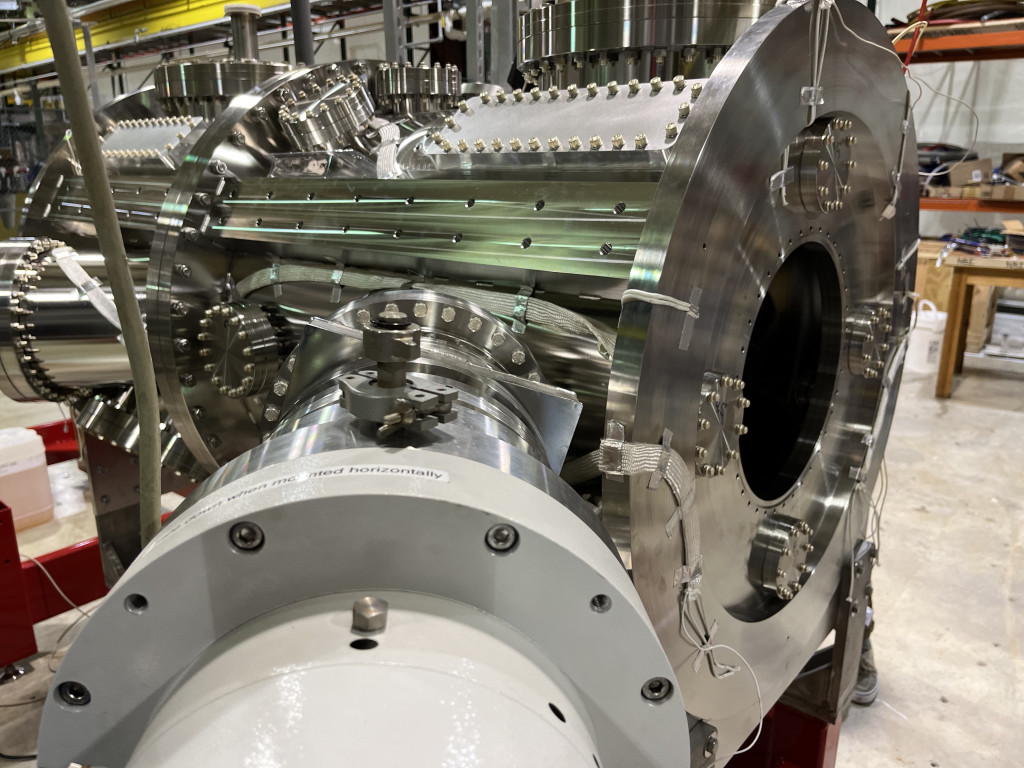
Celestial navigation — charting a course through a combination of identifying star positions in the sky and knowing the time — has existed for centuries and is considerably low-res compared to modern GPS systems. So why did physics professor Kael Hanson recently receive a Draper Technology Innovation Fund (TIF) award for an invention that is based off of it?
“The pain that we’re trying to address with this technology is vulnerabilities in GPS,” Hanson says. “Everyone uses GPS, but if it drops out or gets jammed, that could be a problem, especially for the military or commercial industries like aviation or shipping that rely on it to be working and accurate 100% of the time.”
GPS is vulnerable because the satellites’ weak signals can be easily drowned out by stronger signals. Its function is susceptible to both natural (e.g. strong solar flares) and man-made (e.g. jamming or intentional signal spoofing) incidents.
Distant stars and galaxies, however, remain unaffected by whatever is happening on or near earth, so they are useful visual points of reference — unless the current conditions include daylight, clouds, or fog. Hanson’s invention, known as GRADIANT, reverts to the same concept as celestial navigation, but with a modern twist to avoid any visibility issues.
“Charged particles spinning around in the magnetic fields of our galaxy give off synchrotron radiation at radio frequencies. This technology images the sky in radio frequencies,” Hanson says. “And by doing that, basically you can see through clouds. Our technology is reliably good in all scenarios.”
Radio astronomers have been cataloging radio data for decades, and the signals remain mostly static throughout time. The invention would detect radio frequencies at the user’s location, be computationally compared to the wealth of catalogued data, and then tell the user where they are.
Hanson is not exactly sure where he came up with this idea, but he thinks it came to him when he was at the South Pole 10-15 years ago working on the Askaryan Radio Array (ARA), a radio detector installed below the ice (it is co-deployed with IceCube, which is operated by WIPAC, of which Hanson was director from 2014-2022).

“One of the background signals was the sun, and I thought ‘Oh, we can actually image the sun a couple hundred meters under the ice. Boy, wouldn’t that be interesting if you could somehow use this technology to try to figure out where you are based on where the sun is?’” Hanson says. “But then I just stuffed it away in my brain and didn’t really think about it (until recently).”
In 2021, Hanson started a company, Navigationis, to pursue his modern celestial navigation idea. This past summer, he submitted a disclosure for GRADIANT to WARF, for which a patent has now been filed. Then, he applied for and was awarded the Draper TIF funding.
Draper TIF provides a mechanism to support additional research necessary to bring new concepts and inventions to the patent and licensing stage. A main goal of the program is the eventual introduction of new products and processes into the marketplace for the public good. It is open to UW–Madison faculty and academic staff. The program is administered in partnership between Discovery to Product and the Wisconsin Alumni Research Foundation.
Hanson’s award provides $50,000, which he will use to try to make the technology more licensable.
“In order to really get this thing to the commercial state, it will take millions of dollars, it will take some additional investment,” Hanson says. “With this Draper TIF, we’re going to put together a prototype that actually proves in real hardware the working concept that’s in the patent. My hope is that I’ll have something I can point to, and venture capitalists will be that much more interested in making an investment, or the Department of Defense would be interested in supporting this work.”
